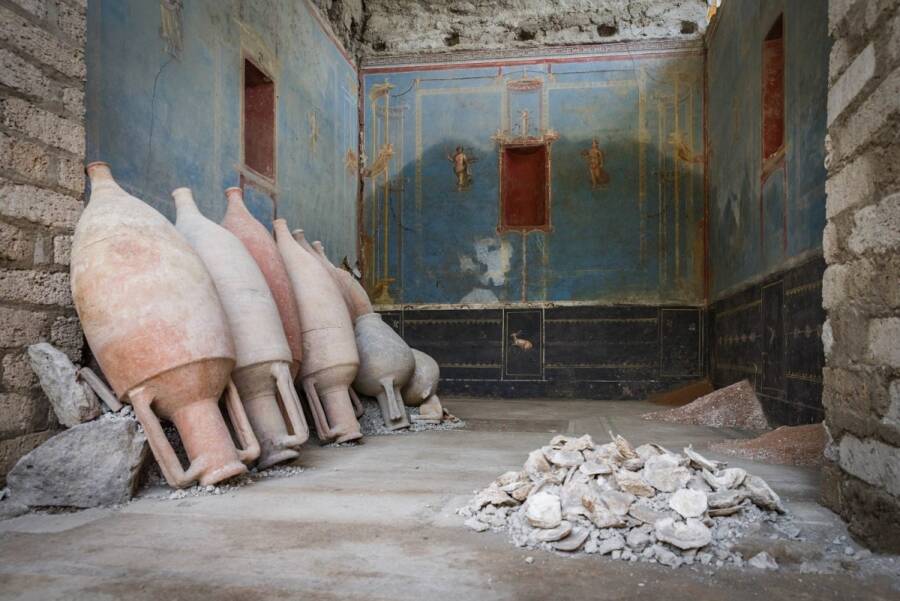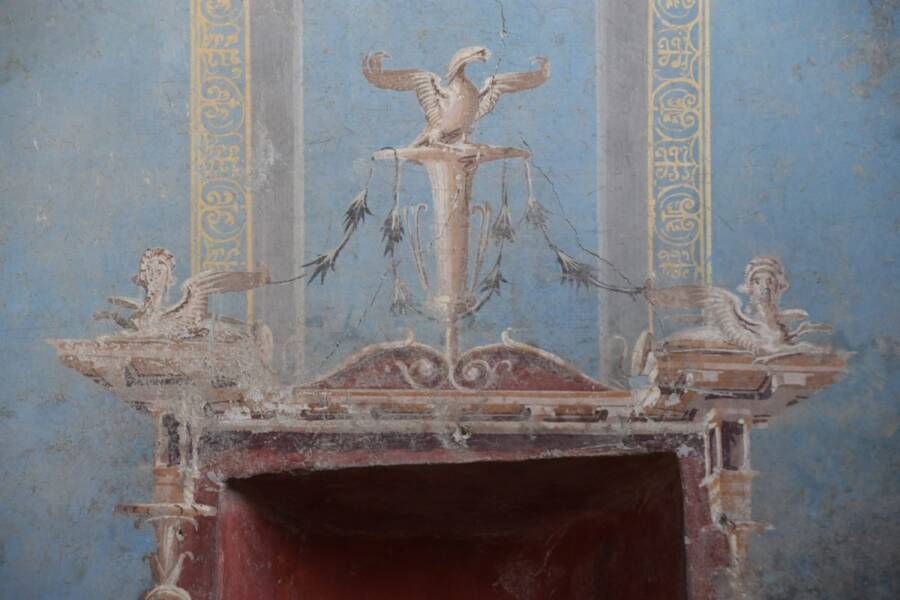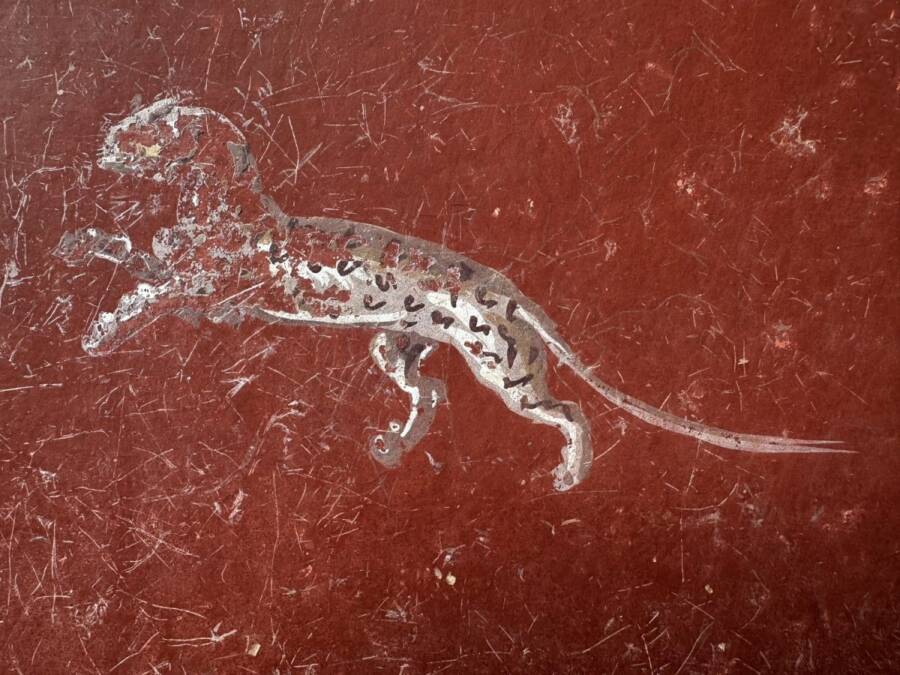The room was likely a sacrarium, or a shrine where ancient Romans kept sacred objects and worshipped household deities.

Pompeii Archaeological ParkThe room is painted a color which “rarely occurs” in Pompeii frescoes.
Thousands of years after Mount Vesuvius destroyed Pompeii, the ancient Roman city continues to yield breathtaking treasures. The latest is a sacrarium, or shrine, painted an enchanting shade of blue.
The room was probably used for ritual activities or storing sacred objects. And it’s filled with delicate ancient frescoes that have been preserved for 2,000 years.
Discovering The ‘Blue Room’ In Pompeii

Pompeii Archaeological ParkThe blue room was first documented some 200 years ago, but it’s been newly examined by Pompeii archaeologists.
According to a statement from the Pompeii Archaeological Park, the room was first documented during the Bourbon Period (1814 to 1830), but a recent excavation has brought the room and its furnishings to light.
It’s located in the Regio IX area of Pompeii, part of an insula (complex) that includes bath buildings and a large, black reception room overlooking a courtyard. The blue room, however, stands apart.

Pompeii Archaeological ParkA close-up of one of the walls in the room, which is painted a rare shade of blue.
The room is painted a shade of blue that “rarely occurs in Pompeian frescoes,” according to the statement, and “was generally used for elaborately decorated rooms.” It was likely a sacrarium or “a shrine devoted to ritual activities and the storage of sacred objects.”
A number of frescoes line the blue walls, including female figures representing the Horae, or the four seasons, and allegorical scenes of agriculture and sheep-farming, including a depiction of a plow and a staff called a pedum. There’s even a fresco of a large spotted cat.

Pompeii Archaeological ParkAlongside frescoes of the seasons and agriculture, one seems to depict a spotted cat like a leopard.
The recent excavation also revealed other furnishings in the household, including 15 “transport amphorae” that were found in the room alongside two bronze jugs and two bronze lamps. Archaeologists also found piles of empty oyster shells at the threshold of the room, which were probably meant to be ground up for use in mortar and plaster.
“Pompeii never ceases to amaze; it is a treasure chest that is still partly unexplored,” remarked Gennaro Sangiuliano, the Italian Minister of Culture. “It is for this reason that we have financed the new excavations and are working to maintain the high quality of the archaeological park.”
Indeed, the “blue room” is just one of several recent discoveries in Pompeii.
Other ‘Treasures’ Found In Pompeii Recently
Pompeii has yielded a number of treasures this year alone. In April, the Pompeii Archaeological Park announced the discovery of a banquet room in one of Pompeii’s most opulent villas. It included a number of breathtaking frescoes, including ones depicting scenes from the Trojan War.

Pompeii Archaeological ParkThe banquet room had a number of frescoes depicting scenes from the Trojan War, including this one of Paris and Helen of Troy.
The next month, in May, the Pompeii Archaeological Park announced two more incredible discoveries: a complex that included a restaurant and a mat-making workshop and charcoal graffiti drawn by children just before the eruption of Mount Vesuvius that depicted bloody gladiator battles.
All these discoveries add to our understanding of Pompeii, the doomed ancient city lost in a cloud of ash and poisonous gas. Spaces like the “blue room” are visceral representations of what the people of Pompeii saw and experienced in their daily lives, which makes this discovery an especially astonishing one.
After reading about the blue room discovered in Pompeii, look through these agonizing photos of Pompeii bodies frozen in time from when Mount Vesuvius erupted and destroyed the city. Or, see how this graffiti from Pompeii shows just how raunchy ancient Romans could be.





